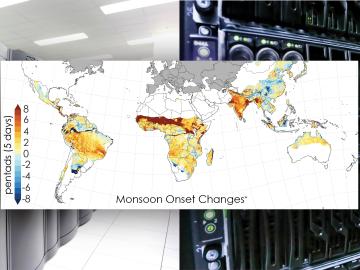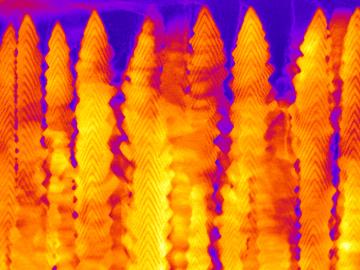
Filter News
Area of Research
- (-) Materials (62)
- (-) Supercomputing (42)
- Advanced Manufacturing (7)
- Biology and Environment (26)
- Computational Engineering (1)
- Computer Science (3)
- Energy Science (58)
- Fuel Cycle Science and Technology (1)
- Fusion and Fission (14)
- Fusion Energy (1)
- Isotope Development and Production (1)
- Isotopes (3)
- Materials Characterization (1)
- Materials for Computing (6)
- Materials Under Extremes (1)
- National Security (13)
- Neutron Science (20)
- Nuclear Science and Technology (7)
- Quantum information Science (1)
News Topics
- (-) 3-D Printing/Advanced Manufacturing (15)
- (-) Computer Science (32)
- (-) Environment (10)
- (-) Grid (5)
- (-) Materials Science (37)
- (-) Microscopy (13)
- (-) Nuclear Energy (3)
- Advanced Reactors (1)
- Artificial Intelligence (14)
- Big Data (1)
- Bioenergy (12)
- Biology (7)
- Biomedical (7)
- Biotechnology (1)
- Buildings (3)
- Chemical Sciences (20)
- Composites (3)
- Coronavirus (7)
- Critical Materials (8)
- Cybersecurity (6)
- Energy Storage (20)
- Exascale Computing (7)
- Frontier (12)
- Fusion (2)
- High-Performance Computing (13)
- Isotopes (5)
- ITER (1)
- Machine Learning (5)
- Materials (41)
- Molten Salt (2)
- Nanotechnology (23)
- National Security (5)
- Neutron Science (22)
- Partnerships (8)
- Physics (17)
- Polymers (6)
- Quantum Computing (5)
- Quantum Science (17)
- Security (4)
- Simulation (1)
- Space Exploration (1)
- Summit (14)
- Transportation (5)
Media Contacts

Scientists from the Department of Energy’s Oak Ridge National Laboratory and a dozen other international research institutions have produced the most elaborate set of projections to date that illustrates possible futures for major monsoon regions.

An ORNL team used a simple process to implant atoms precisely into the top layers of ultra-thin crystals, yielding two-sided structures with different chemical compositions.

A team led by the Department of Energy’s Oak Ridge National Laboratory synthesized a tiny structure with high surface area and discovered how its unique architecture drives ions across interfaces to transport energy or information.

For the second year in a row, a team from the Department of Energy’s Oak Ridge and Los Alamos national laboratories led a demonstration hosted by EPB, a community-based utility and telecommunications company serving Chattanooga, Tennessee.

OAK RIDGE, Tenn., May 5, 2020 — By 2050, the United States will likely be exposed to a larger number of extreme climate events, including more frequent heat waves, longer droughts and more intense floods, which can lead to greater risks for human health, ecosystem stability and regional economies.

OAK RIDGE, Tenn., Feb. 27, 2020 — Researchers at Oak Ridge National Laboratory and the University of Tennessee achieved a rare look at the inner workings of polymer self-assembly at an oil-water interface to advance materials for neuromorphic computing and bio-inspired technologies.

OAK RIDGE, Tenn., Feb. 19, 2020 — The U.S. Department of Energy’s Oak Ridge National Laboratory and the Tennessee Valley Authority have signed a memorandum of understanding to evaluate a new generation of flexible, cost-effective advanced nuclear reactors.

An international team of researchers has discovered the hydrogen atoms in a metal hydride material are much more tightly spaced than had been predicted for decades — a feature that could possibly facilitate superconductivity at or near room temperature and pressure.

Rigoberto “Gobet” Advincula has been named Governor’s Chair of Advanced and Nanostructured Materials at Oak Ridge National Laboratory and the University of Tennessee.

Gina Tourassi has been appointed as director of the National Center for Computational Sciences, a division of the Computing and Computational Sciences Directorate at Oak Ridge National Laboratory.


